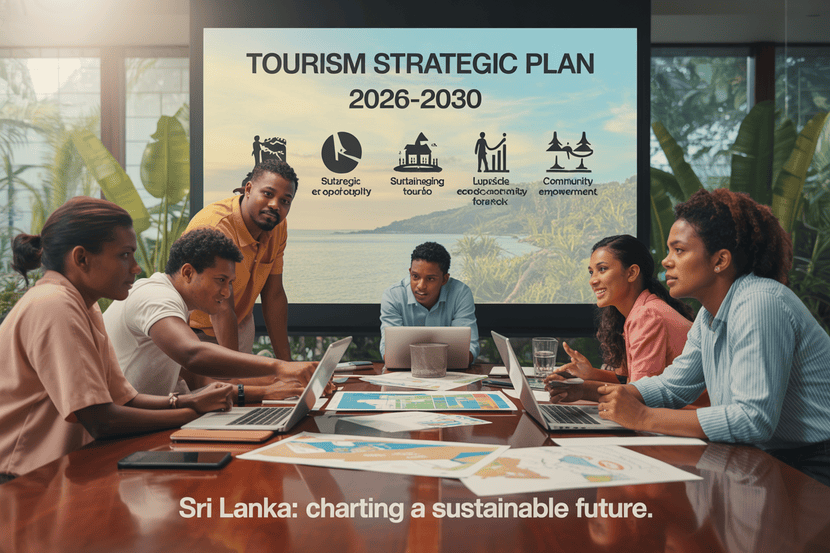≡-US, China, UAE, UK, New Zealand, Australia and Other Hotel Markets Navigate Over Five Percent Shift in Global Tourism Realignment This Year – Viral of Today
<> Viral of Today <>
Home » America Travel News » US, China, UAE, UK, New Zealand, Australia and Other Hotel Markets Navigate Over Five Percent Shift in Global Tourism Realignment This Year Thursday, June 19, 2025Hotel markets in key global regions—such as the US, China, UAE, UK, New Zealand, and Australia—are each responding to distinct challenges in 2025, with the latest STR/TE forecast indicating a more than five percent shift in worldwide tourism patterns and performance trends. This realignment is driven by varied regional performance: strong rate-led growth in the Middle East, subdued demand in Europe, and mixed outcomes across Asia Pacific influenced by economic uncertainty, trade tensions, and event-driven spikes. The divergence underscores how macroeconomic pressures, inflation, and changing travel behaviors are reshaping global hospitality recovery at different speeds.The STR/TE Hotel Market Forecast for May 2025 delivers a comprehensive assessment of global hospitality performance, with distinct trends emerging across Europe, Asia Pacific, and the Middle East. Each region faces a unique blend of market dynamics, economic shifts, and demand-supply factors, leading to highly varied RevPAR (revenue per available room) trajectories and strategic implications for the hotel industry.Europe: Subdued Growth Amid Economic HeadwindsThe European hospitality industry is expected to record a slight rise of one-point-seven percent in revenue per available room (RevPAR) in 2025, reflecting tempered growth amid shifting market conditions. This marks a downward revision from the previous 2.4 percent projection, primarily due to slower-than-anticipated demand growth, despite a strong event-driven travel season in 2024.Occupancy growth expectations have been downgraded in twenty-one of thirty-one analyzed markets. This signals a broad-based softening in travel activity across the continent, even though daily rates have proven more resilient. Eighteen markets are still expected to register gains in average daily rate (ADR), providing some revenue protection.In the UK, specific vulnerabilities are emerging. A softening in ADR is anticipated due to external economic stressors, including elevated inflation levels and tighter corporate travel expenditures. A stronger British Pound against the U.S. Dollar could make the UK a pricier option for budget-conscious international visitors, potentially dampening inbound tourism due to reduced affordability.Central and Eastern European markets are facing similar challenges, with uneven demand recovery and cost inflation contributing to cautious revenue growth estimates. Some markets continue to benefit from event-driven travel and short-haul demand, but macroeconomic constraints remain a significant drag.Asia Pacific: Mixed Signals in an Economically Volatile RegionThe Asia Pacific hotel sector is expected to achieve a RevPAR increase of 3.0 percent in 2025, driven almost entirely by ADR improvements, while occupancy remains largely flat or grows at a slower pace. The uneven post-pandemic recovery and ongoing economic uncertainties are shaping regional performance in complex ways.Mainland China remains a focal point of concern. Corporate travel demand is subdued due to prevailing economic uncertainty and fears of renewed trade tensions with the US. Rising concerns over potential tariff increases are dampening business travel confidence and investor outlook in major Chinese cities, leading to softer midweek hotel occupancy levels.On the other hand, select markets such as Singapore and Tokyo present more favorable outcomes. Tokyo, in particular, has witnessed a significant rate uplift spurred by demand surrounding Expo 2025 in Osaka. This global event has bolstered regional visitation and stimulated price resilience in the Japanese capital, particularly during the opening month.In Southeast Asia, markets like Bangkok and Kuala Lumpur remain price-competitive and are benefitting from a rise in intra-regional travel. However, limited corporate group demand and weaker long-haul arrivals continue to pressure year-round occupancy levels.Australia and New Zealand face contrasting realities. While demand in major urban hubs is recovering steadily, supply pipeline pressures and labor shortages are impacting profitability, especially in secondary markets.Middle East: Leading Global Recovery and Rate-Led GrowthThe hotel industry in the Middle East is projected to maintain strong momentum in 2025, with revenue per available room (RevPAR) expected to climb by a notable five-point-four percent. This represents the strongest regional performance globally and is predominantly rate-driven rather than occupancy-led.Markets in the UAE—particularly Dubai and Abu Dhabi—remain key growth drivers. These destinations benefit from a mature hospitality infrastructure, a strong event calendar, and measured development pipelines that avoid oversaturation. The stability in supply growth allows hoteliers to optimize pricing strategies effectively.The cultural and religious calendar continues to influence performance. While Ramadan still impacts performance in parts of the region, its effects are less pronounced in the UAE due to a more Westernized approach to tourism and leisure operations. In contrast, cities such as Riyadh see more substantial slowdowns during religious periods, affecting both domestic and international demand cycles.Elsewhere in the region, secondary Gulf markets are gaining momentum as travel patterns diversify. Visitors are increasingly exploring emerging destinations, creating opportunities for development beyond traditional hubs.Long-haul connectivity, visa policy reforms, and sustained government investment in tourism infrastructure are also contributing to the region’s resilience and attractiveness for both leisure and business travel.Long-Term Global Outlook: Cautious Optimism with Regional DisparitiesFrom 2027 to 2029, the global hotel industry is forecast to maintain a steady growth trajectory. RevPAR is projected to rise annually across most major regions, though the pace of increase may be tempered by supply additions and shifting traveler behavior.Demand growth is expected to remain stable, particularly in high-visibility event-driven markets and tourism-friendly economies with strong infrastructure. However, sustained high levels of supply development in some areas could limit pricing power and pressure margins.The European hotel sector is likely to face continued economic strain, especially in markets where wage inflation, energy costs, and geopolitical uncertainties weigh heavily on operational viability. Investment decisions in the region will require strategic caution and a focus on value-driven propositions.Asia Pacific is set to benefit from rising middle-class consumption and long-term travel appetite, especially as younger demographics seek experiential travel. However, volatility in mainland China and economic fragility in several Southeast Asian nations mean that RevPAR gains will not be evenly distributed.The Middle East, meanwhile, shows sustained promise. Robust rate strategies, combined with high-profile events, infrastructure projects, and liberalized travel policies, are likely to keep the region in a leadership position through the latter part of the decade.Strategic Outlook for Hoteliers and InvestorsThe 2025 STR/TE forecast underscores the importance of regionally nuanced strategies. In Europe, revenue management and flexible cost control will be essential to navigate demand plateaus and rate stagnation. In Asia Pacific, capturing ADR growth amid occupancy volatility requires targeted marketing and tailored service offerings to high-yield segments.For Middle East stakeholders, the focus will be on consolidating gains, expanding beyond legacy markets, and leveraging destination branding to support year-round visitation.Investors should continue to monitor labor markets, inflationary pressures, and policy shifts across key regions. Capital allocation must favor markets with strong demand fundamentals, responsible supply growth, and supportive regulatory environments.Technological adoption, particularly in revenue management systems and personalized guest engagement, will also play a pivotal role in maintaining competitive advantage in a fragmented recovery landscape.As the global hotel market navigates an increasingly complex environment in 2025, regional variations are more pronounced than ever. While the Middle East surges ahead with rate-led performance, Europe and Asia Pacific face slower, more uneven recoveries shaped by macroeconomic and geopolitical variables. The road ahead demands agility, innovation, and precision planning from all industry stakeholders.International hotel markets such as the US, China, UAE, UK, New Zealand, and Australia are witnessing more than a five percent deviation in travel performance in the year due to variable regional expansions, financial strains, and changing travel dynamics. It reflects a global travel realignment as markets react differently to the post-pandemic recovery indicators.By staying attuned to regional dynamics and capitalizing on emerging trends, hoteliers and investors can position themselves for sustainable growth in a market defined by transformation and opportunity.Tags: europe travel, global hotel market, global tourism recovery, Hospitality Industry, hotel growth, Hotel News, International travel, Middle East tourism growth, post-pandemic tourism, Tourism news, travel demand shifts, Travel News
This information will surprise you!
See also
- Read until the end to discover everything.
- Important information you need to know.
- Interesting facts and helpful tips.
Conclusion
Did you enjoy the news? Keep following us daily!













